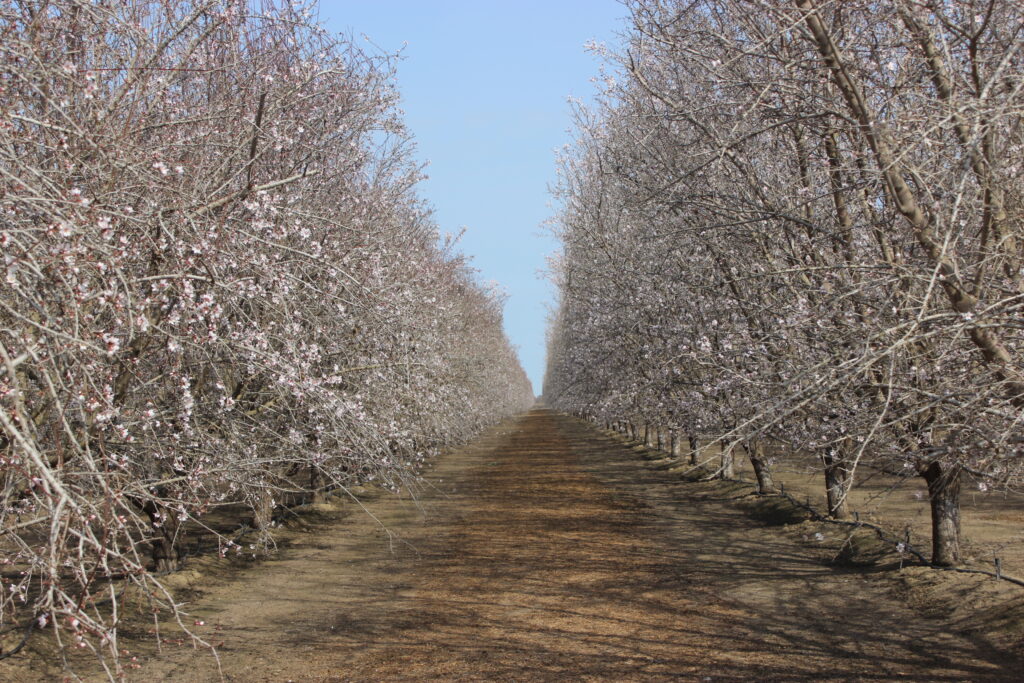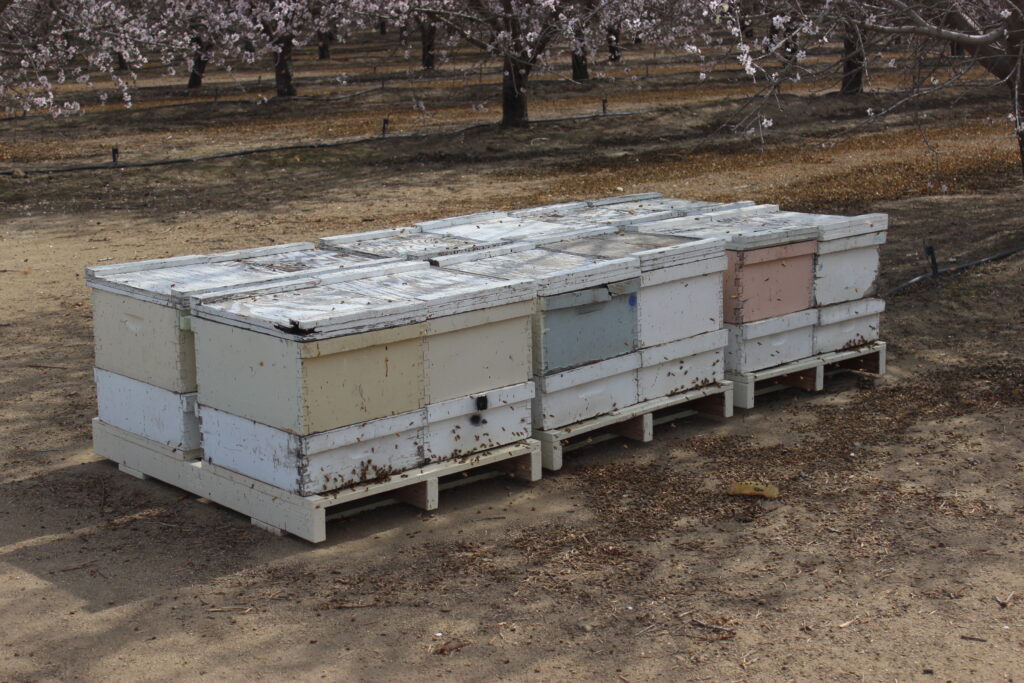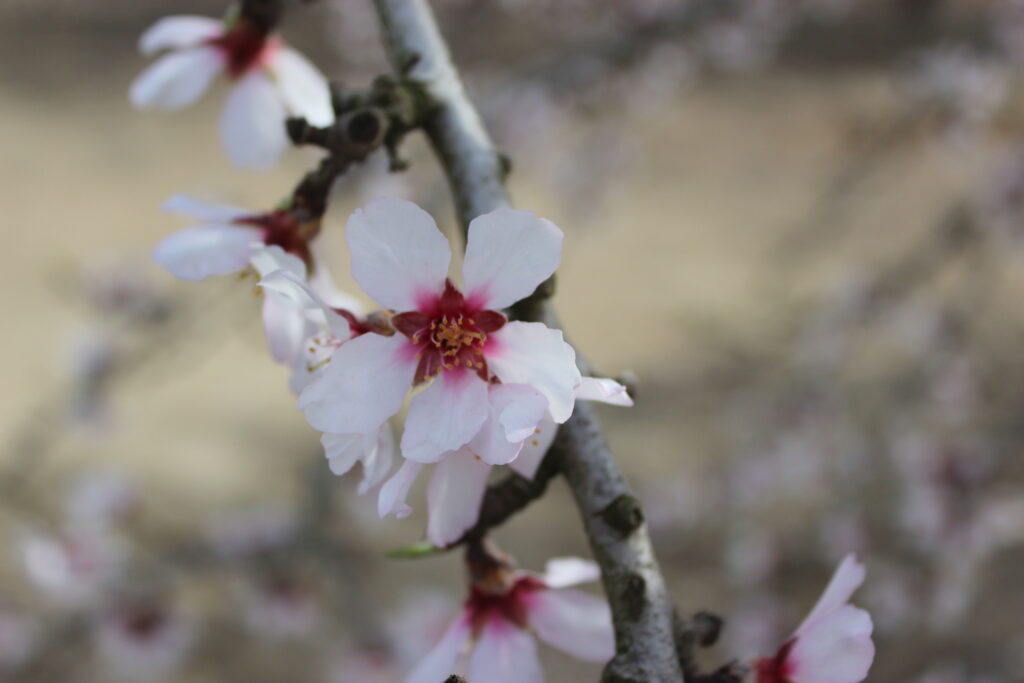
Growers are bringing in bee hives to pollinate the next crop in February and March
By Elizabeth Fichtner, UCCE Farm Advisor and Caleb Crawford, UCCE Staff Research Assistant
Mid-winter marks the beginning of the bloom season in the southern San Joaquin Valley. The almond bloom creates a striking display of white flowers in mid-February and proceeds to the beginning of March in Tulare County. While enjoying the spectacular floral display, here are a few tips to help maintain personal safety and gain a better appreciation for the processes occurring in our region’s orchards.
During the dormant and delayed-dormant period, almond growers are already active in protecting the future crop from pests and diseases. Growers will shake residual nuts off trees. These old nuts, referred to as “mummies,” may harbor navel orangeworm larvae (an insect pest of almond) and fungal spores of brown rot (a disease of almond). Mummy removal is a non-chemical method of insect and disease management.
Additionally, during the dormant season, several insect pests are managed with the application of dormant oil. Oils are an example of a “soft chemistry” used as an insecticide because they disrupt the insect’s exoskeleton and have minimal effect on vertebrate animals and humans. If pest populations are high, an additional insecticide product may be added to the dormant oil application. These products are applied during the dormant season both to achieve better spray coverage and to mitigate the impact of insecticides on bees. During bloom, fungicides are also applied to protect flowers from disease. If rainfall has made the orchard floor impassible for heavy equipment, some spray applications may be made by air. As a result, to maintain safety and respect private property, it is best to enjoy bloom from outside the orchard unless invited on site by the grower.

Because almonds are bee-pollinated, hives are brought into orchards in late January. Over two million hives are required to service the pollination of California’s almond crop. Hives are imported into California from all over the U.S. Bees are not aggressive to humans while they are flying in the orchard; however, bees may be aggressive when protecting their hive. As a word of caution, bees can be enjoyed and observed while they are away from the hive, but hives should not be touched or tampered with. Hives will be removed from orchards at the end of bloom, generally in mid-March.

The weather conditions during bloom may greatly influence the yield realized during harvest. Nighttime temperatures below freezing may damage flowers. Daytime temperatures ranging from 60°F-90°F promote bee activity and pollination. A brief reprieve from the rainy winter, combined with moderate temperatures during bloom, will benefit the set of the 2023 almond crop.

Comments are closed.